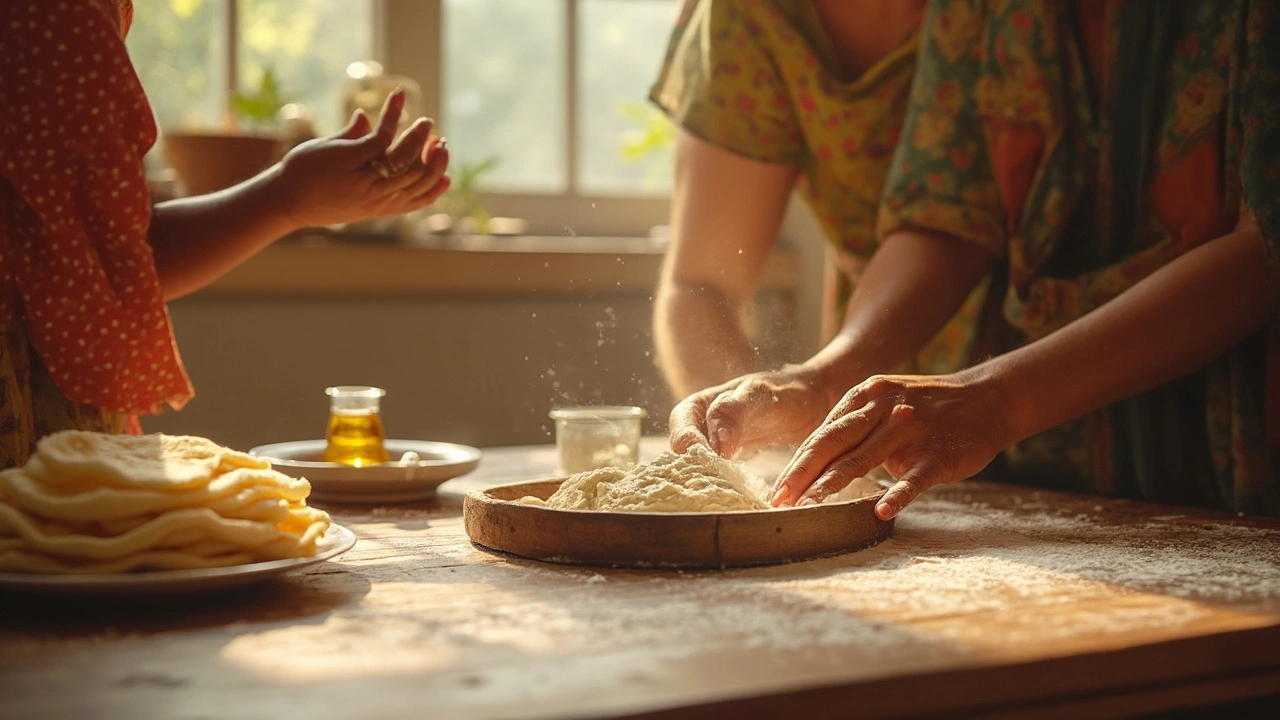When to Add Oil to Dough – Timing Tips, Tricks & Common Mistakes
When working with when to add oil dough, the exact point you stir oil into the mix decides whether your bread stays fluffy or becomes dense. Also known as oil‑in‑dough timing, it influences gluten development, moisture retention, and even the final crumb. Getting this right can turn an everyday roti into a restaurant‑quality flatbread.
Oil, Dough, and the Science of Kneading
The backbone of any flatbread is dough, a simple blend of flour, water, and sometimes leavening agents. When you add oil too early, the fat coats the flour particles and hampers gluten formation, leading to a crumb that’s crumbly rather than elastic. Wait until the flour‑water mixture has formed a cohesive mass, then drizzle oil in while you knead – this is when the gluten strands can stretch, and the oil acts as a tenderizer instead of a blocker. when to add oil dough therefore encompasses the step of kneading, the process of folding and pressing the dough to develop structure. The semantic triple here is: "Adding oil after the gluten network begins improves texture," and "Proper kneading with oil yields softer rotis."
Beyond texture, timing also affects flavor. Oil introduced during the first few minutes of kneading gets evenly distributed, allowing spices and herbs to cling better. If you wait until the dough is fully rested, the oil may pool on the surface, creating pockets of greasiness. This is why many home cooks add a tablespoon of oil just before the final stretch before shaping their parathas. The relationship between oil, a liquid fat that lubricates and enriches dough and the dough’s elasticity is a classic example of ingredient synergy.
Proofing—the rest period where dough rises—also feels the impact of oil timing. If oil is mixed in too early, it can coat the yeast cells, slowing fermentation and resulting in a flatter final product. Conversely, adding oil right after the first rise (known as the “bench rest”) gives the yeast enough time to work while still providing the tenderizing benefits later. This creates a clear semantic connection: "Proofing before oil addition ensures optimal rise," and "Oil added post‑proof supports softer crusts." For flatbreads like naan or bhakri, where a puffed interior is prized, the sweet spot is often right after the dough doubles in size, just before shaping.
Finally, the cooking method ties everything together. When you finally hit the hot tawa or skillet, dough that received oil at the right stage will spread evenly, develop a golden‑brown crust, and retain moisture inside. Too much oil too early can cause the surface to sear before the interior cooks, leading to a raw center. By timing oil addition just before the final roll‑out, you give the dough a thin, consistent film that crisps nicely without burning. This connection between cooking, the heat application that transforms dough into edible bread and oil timing completes the chain of cause and effect. Armed with these insights, you’ll know exactly which step calls for the drizzle, the splash, or the skip. Below you’ll find a curated set of articles that walk through each stage—kneading tricks, proofing dos and don’ts, and cooking tips—to help you master the perfect dough every time.

Best Time to Add Oil in Roti Dough: Tips for Fluffy Rotis Every Time
Want softer, tastier rotis? Discover exactly when and why to add oil to your dough. Get flavorful and fluffy results with these tried-and-tested tips.